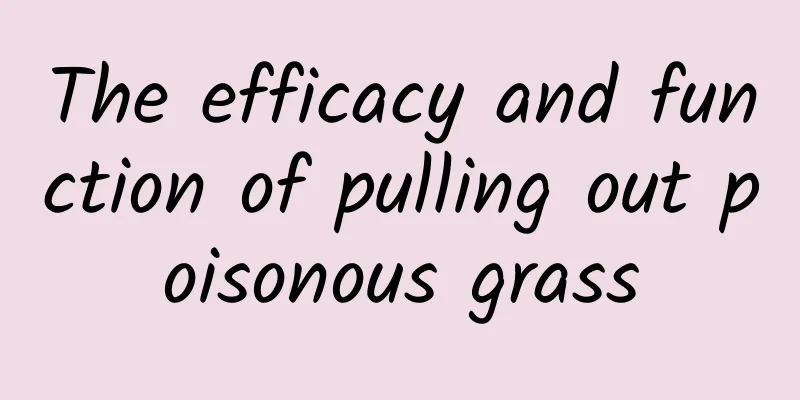After enduring this kind of "bitterness", there will definitely be less pain in the future

|
Looking at its shape and hearing its name, you know that this fruit must be very bitter when you hear its name. Well, its name is Brucea javanica, also known as old Brucea, Brucea javanica, bitter hazelnut, Sophora flavescens, Brucea egg, duck egg, duck gall, Melia azedarach, and small Melia azedarach. The fruit is gray-black when ripe, and has irregular polygonal reticular patterns after drying. The shell is hard and brittle, the seed kernel is yellow-white, oval, with a thin membrane, rich in oil, and tastes extremely bitter. Brucea javanica has many uses; Antimalarial effect Chicken malaria experiments have shown that oral administration of Brucea javanica seeds or intramuscular injection of their crude extracts have significant antimalarial effects, reducing the number of malarial parasites in the blood or even turning them negative. Intramuscular injection of Brucea javanica seed decoction has a significant anti-fowl malaria effect, with the minimum effective dose being 0.02g crude drug/kg and the minimum effective dose of the extract being 0.0025g/kg. Larger doses taken orally are also effective. The results suggested that its antimalarial active ingredients were easily soluble in water and the heat-resistant leaves of Brucea javanica also had antimalarial effects. Amebic action Adding deoiled javanica water extract and ether extract to infected feces can kill amoeba, while javanica oil has no effect. The water extract of Brucea javanica seeds (1%) can kill amoeba within 15 to 20 minutes in vitro, and a 1:1000 aqueous solution can inhibit its growth. Oral administration or enema of Brucea javanica seeds has a good effect on amoebic dysentery. In vitro, the brucea javanica butanol extract, quassin, brucea javanica C and brucei brucei all had significant inhibitory effects on Entamoeba histolytica. Anti-tumor effect The water-in-oil intravenous emulsion of Brucea javanica oil can inhibit mouse Ehrlich ascites carcinoma cells and ascites-type liver cancer cells in vitro; in the overall experiment, the water-in-oil intravenous emulsion has a good anti-cancer effect on mouse Ehrlich ascites carcinoma, and also has a certain effect on sarcoma when administered locally. Brucea javanica aqueous injection (9 mg/testis) and oil-in-water intravenous lactic acid (3 mg per testis) have a significant inhibitory effect on the mitosis of mouse spermatogonia. Intravenous infusion of Brucea javanica emulsion in the treatment of patients with esophageal cancer, gastric cancer, rectal cancer and breast cancer. Treatment of tumors: Apply javanica oil to the affected area. It has therapeutic effects on external auditory canal papilloma, laryngeal papilloma, common warts, flat warts, etc. Papilloma of the external auditory canal can be treated by dripping javanica oil 1-2 times a day, and it will fall off in 3-7 days. For single laryngeal papilloma, the tumor can be removed first, and then the base can be wiped with javanica oil; for multiple laryngeal papilloma, the easily removable tumor can be removed first, and then javanica oil can be applied to the surface of the tumor. Children should apply the swab under direct laryngoscopy, and adults should apply the swab under indirect laryngoscopy, 1-3 times a week. Generally, the swelling will disappear after 5-6 applications, but it can be used up to 30 times. Brucea javanica oil has no adverse side effects on the throat. No local redness, swelling or ulcers are found after application. Scars are formed at the papilloma site, and it has no destructive effect on the normal mucosa. No recurrence was observed in patients treated with Brucea javanica oil To treat common warts, flat warts, etc., you can first use a knife to gently scrape the epidermis of the wart (do not scrape too deep and damage the surrounding skin), split the brucea javanica and rub it directly on the affected area, or dip a small amount of brucea javanica oil and drop it on the wart, once every 4-7 days, 10 times as a course of treatment. Do not wash with water or towel within 5-6 hours after applying the oil to avoid wiping off the oil or affecting the surrounding skin; when applying the medicine on the face, be sure to prevent it from entering the eyes; if the skin lesions are covered with scabs when using the medicine again, gently scrape off the scabs before applying the oil. The above method was used to treat 47 cases of flat warts, 39 of which were cured, most of them within 5 times. Most patients experience inflammatory symptoms such as redness, swelling, itching and burning sensation on the lesions and healthy skin after taking the medicine, but this phenomenon rarely occurs in cases where the treatment is ineffective. After the inflammatory reaction occurs, continue to apply the medicine. The original inflamed area will gradually turn brown-black. After a few days, the scab will fall off and the wart will disappear. The effect of using javanica oil is faster than that of using javanica seed, but the local inflammation is also more severe. You can also grind the brucea into fine powder, add water to make a paste, and apply it on the warts once in the morning and once in the evening until a scab forms. Generally, the wound will scab over and heal in about 2 weeks. Brucea oil works more quickly on soft, linear papillomas than on common warts and flat warts. Its therapeutic effect may be due to its toxic effect, which causes cell degeneration, nuclear condensation, and finally necrosis and shedding. To treat chicken heels: Take 20 seeds of Brucea javanica, smash them open and take out the kernel, poke it with a needle tip, and bake it above the lamp for a short time until it turns yellow. Then put it on a small piece of adhesive tape, press the medicine into a piece with a knife, and stick it to the affected area (wash the affected area with boiling water before sticking, and cut off the thick skin with a knife). Change it once a day, and it will be cured in about 20 days. A simpler and more effective way to treat corns: (1) Take one Brucea javanica seed, peel off the hard outer shell, and then drop one drop of 75% ethanol on the Brucea javanica seed kernel. (2) Disinfect the affected area with an ethanol cotton ball, press the treated Brucea javanica on the corn, and secure it with a Band-Aid (or adhesive tape) for 4 days. Then apply 1 to 2 capsules continuously. Corns, if treated surgically, not only will it take a long time, but also have a high recurrence rate and are often difficult to cure. 75% ethanol has a bactericidal and disinfecting effect on the skin, and has a softening effect when dropped on the kernels of Brucea javanica. The Brucea javanica was in full contact with the lesion and the area was of comparable size. Ethanol can prevent the javanica from spoiling. Brucea javanica tastes extremely bitter and is cold in nature; it is slightly toxic and has the functions of clearing away heat, detoxifying and corrosive. This method uses very little medication. It is safe and painless, low-cost, has no side effects or complications, and has reliable efficacy. Remember, doctors diagnose based on each patient's physical condition, age, and medical condition. Each patient has his or her own unique personality and not everyone is suitable for the treatment. Chinese herbal medicine is not without toxic side effects, so please take it as directed by your doctor. |
<<: You actually like the "ghost" that even cancer patients are afraid of
>>: Hepatitis B patients actually like to see this "girl" the most
Recommend
The efficacy and function of insect bamboo shoots
Worm bamboo shoots are a kind of medicinal materi...
The efficacy and function of the earth melon
Many people are not very clear about the wild gou...
Save it now! In the case of influenza A outbreak, in addition to oseltamivir, you can also use these drugs!
Influenza is an acute respiratory infection that ...
The efficacy and function of white crane vine root
After thousands of years of sedimentation and acc...
Can Cordyceps and Panax notoginseng be eaten together?
Cordyceps and Panax notoginseng are both common C...
Why do you have to leave the fresh meat aside for a few days instead of eating it?
Review expert: Wang Guoyi, Postdoctoral Fellow in...
How to make Poria wine
In life, Poria cocos is a very common health-pres...
What makes us feel sleepy and what happens if we don't sleep?
Human life is actually very short, and the best y...
Will the nuclear fusion energy used by Iron Man’s suit become the ultimate energy source for mankind?
Source: Tutu is the way...
The efficacy and function of fish scale armor
We know that there are many kinds of Chinese medi...
The price of golden cherries has skyrocketed. Can we still achieve fruit freedom? These cheap alternatives are also good
Recently, the news #Netizens complained that they...
How to eat aloe vera
I believe many people are familiar with aloe vera...
Never flooded for more than 600 years! Why is the Forbidden City not afraid of heavy rain?
Review expert: Wang Shengwei, Senior Engineer, Be...
Cauliflower, broccoli, and kale are actually "brothers"
After eating them for so many years, I finally re...
Is ibuprofen really a universal painkiller? Beware! Taking the wrong medication in these 6 situations can be dangerous
Expert of this article: Qin Wei, PhD, Chief Pharm...









